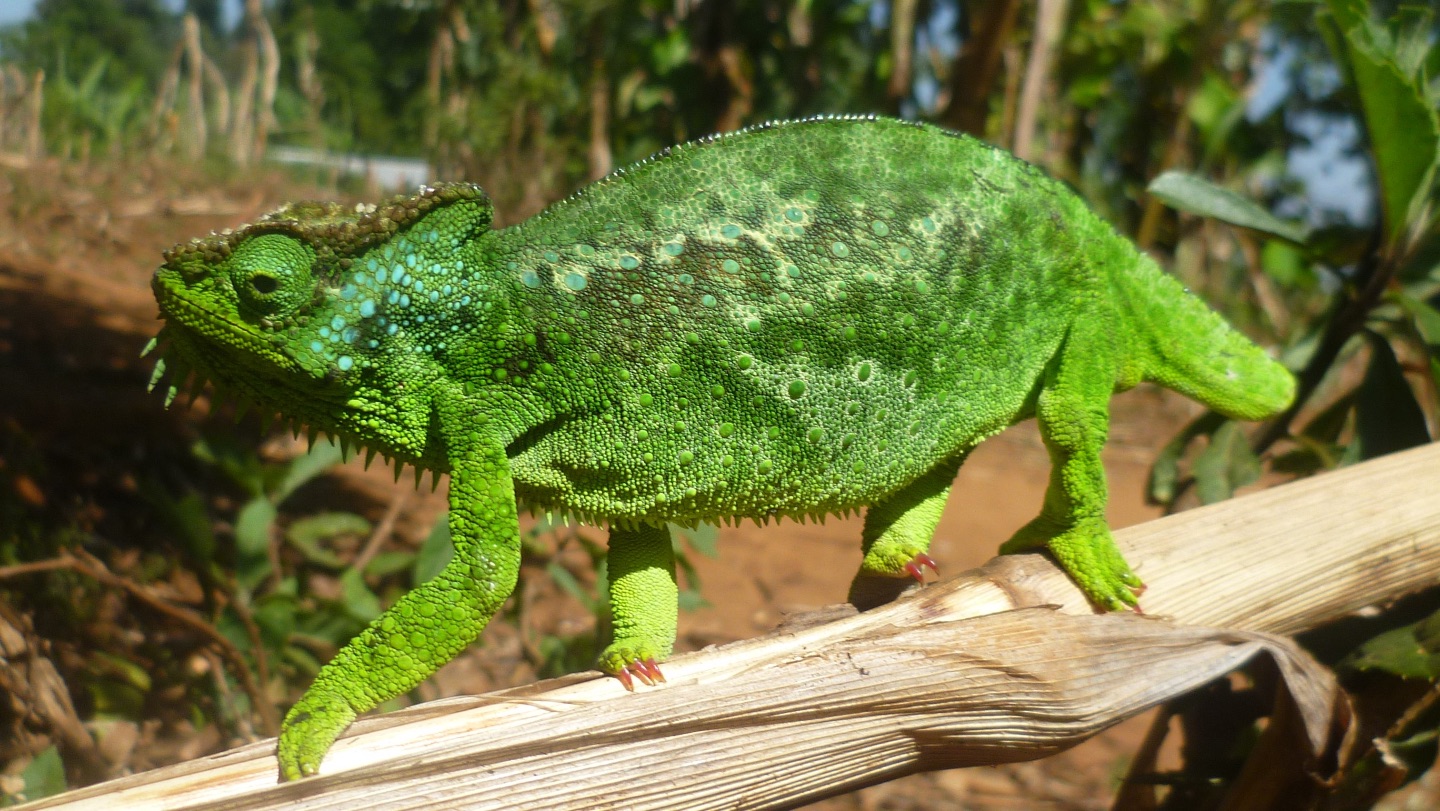Cameroon is home to over a dozen known species of chameleons, including six that are endemic to the country’s volcanic line — a string of volcanoes that extends from the coast into the center of the country.
The volcanic line hosts a complex forest ecosystem, and is surrounded by a rapidly growing human population. Walter Paulin Tapondjou Nkonmeneck focused his 2015 CARN research on understanding the ecology of Cameroon’s chameleons and the role they play in ecosystems. Over a year of field research, Nkonmeneck surveyed for chameleons across the volcanic line, sampling 14 of Cameroon’s 15 species. To investigate their ecological needs, he recorded perch height preferences for each species and assessed their feeding habitats. His research shed light onto the habitat preferences and ranges of these Seussian animals, and revealed major threats to their habitats, including expanding agricultural development along the volcanic line. This information is a crucial component in building effective conservation plans for chameleons.
During his CARN research, Nkonmeneck also worked to raise awareness about chameleons, and the importance of protecting them, in four nearby villages. He has plans for additional field work and analysis, including studying gene flow between different chameleon populations. Nkonmeneck has a master’s in zoology from the University of Yaoundé, and is a team member at the Cameroon Herpetology—Conservation Biology Foundation.
